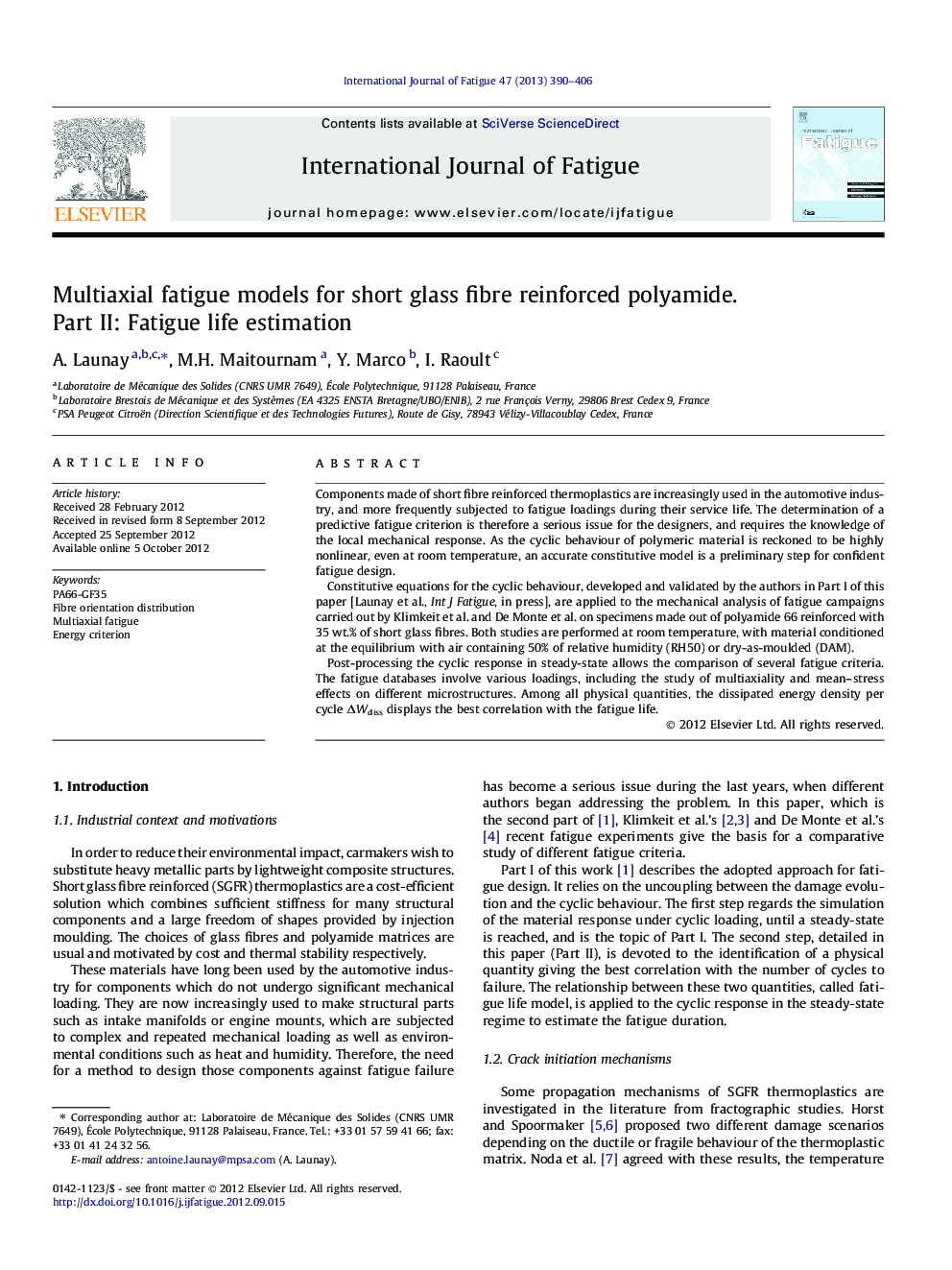| Article ID | Journal | Published Year | Pages | File Type |
|---|---|---|---|---|
| 780950 | International Journal of Fatigue | 2013 | 17 Pages |
Components made of short fibre reinforced thermoplastics are increasingly used in the automotive industry, and more frequently subjected to fatigue loadings during their service life. The determination of a predictive fatigue criterion is therefore a serious issue for the designers, and requires the knowledge of the local mechanical response. As the cyclic behaviour of polymeric material is reckoned to be highly nonlinear, even at room temperature, an accurate constitutive model is a preliminary step for confident fatigue design.Constitutive equations for the cyclic behaviour, developed and validated by the authors in Part I of this paper [Launay et al., Int J Fatigue, in press], are applied to the mechanical analysis of fatigue campaigns carried out by Klimkeit et al. and De Monte et al. on specimens made out of polyamide 66 reinforced with 35 wt.% of short glass fibres. Both studies are performed at room temperature, with material conditioned at the equilibrium with air containing 50% of relative humidity (RH50) or dry-as-moulded (DAM).Post-processing the cyclic response in steady-state allows the comparison of several fatigue criteria. The fatigue databases involve various loadings, including the study of multiaxiality and mean–stress effects on different microstructures. Among all physical quantities, the dissipated energy density per cycle ΔWdiss displays the best correlation with the fatigue life.
► An anisotropic and nonlinear constitutive behaviour is used for the computation of the cyclic response. ► This constitutive model is applied to multiaxial fatigue tests presented in the literature by others. ► Mechanical values are computed in the steady-state regime of stress-controlled fatigue tests. ► The dissipative energy density per cycle is well correlated to the fatigue life. ► The proposed energy criterion is more predictive than other published criteria.
